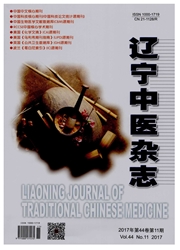

 中文摘要:
中文摘要:
目的:运用数据挖掘技术,分析现代针灸文献治疗牙痛的"同功穴"选用规律。方法:采用计算机检索的方式,对1958-2015年中国期刊全文数据库(CNKI)、万方数据知识服务平台(WF)和维普数据库中针灸治疗牙痛的相关文献进行检索及梳理,得到相关文献82篇,分析现代针灸治疗牙痛"同功穴"的选用规律。结果:通过分析发现,现代文献针灸治疗牙痛"同功穴"主要为合谷、下关和颊车;"同功穴"所属经脉主要为足阳明胃经和手阳明大肠经;"同功穴"所在部位主要是头颈部、下肢部和上肢部;"同功穴"的特定穴类别选用主要是五输穴和原穴。结论:针灸治疗牙痛,选取主治功效相同或相近的"同功穴",使腧穴配伍产生协同增效作用,可起到增强针灸治疗牙痛的临床疗效。
 英文摘要:
英文摘要:
Objective: To analyze the rule of analogical acupoints about acupuncture and moxibustion treatment of toothache in modern literature based on the data mining. Methods: Through retrieving the literature about acupuncture treatment of toothache in CNKI,Wanfang and Weipu Database from 1958 to 2015,we got 82 related papers and analyzed the rule of analogical acupoints selection. Results: Results: According to analysis,Hegu( LI4),Xiaguan( ST7) and Jiache( ST6) are the most applied points,which belong to Stomach Meridian of foot-Yangming and Large Intestine Meridian of hand-Yangming. Sites of the selected acupoints most belong to head and neck,lower and upper limbs. Specific points are mainly five Shu points and source points. Conclusion: Acupuncture and moxibustion treatment of toothache selects analogical acupoints,making the acupoints compatibility produce synergistic effect and can rise to enhance the clinical curative effect.
 同期刊论文项目
同期刊论文项目
 同项目期刊论文
同项目期刊论文
 期刊信息
期刊信息
